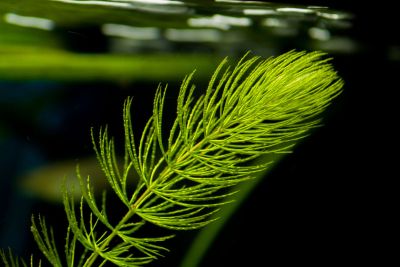What is Hornwort?
The name hornwort comes from the stiff protrusions on the stems. The genus, Ceratophyllum, is from the Greek ‘keras,’ meaning horn, and ‘phyllon,’ meaning leaf. Plants that bear the surname “wort” were often medicinal. Wort simply means plant. Each plant’s characteristics would lead to its individual name. For instance, bladderwort has little bladder-like growths, liverwort looks similar to tiny livers and kidneywort resembles that body part. Hornwort in ponds protects small frogs and other animals. Fish tank owners may also find hornwort aquarium plants to purchase. While it is useful as an oxygenator for captive fish, it also grows rapidly and can become a bit of a problem. Hornwort coontail leaves are arranged in delicate whorls, up to 12 per whorl. Each leaf is divided into many segments and features bendable teeth at the midribs. Each stem can grow up to 10 feet (3 m.) rapidly. The stem resembles a raccoon’s tail, hence the name, with a rough feel. After flowering with male and female inconspicuous blooms, the plant develops tiny barbed fruits. The fruits are consumed by ducks and other waterfowl. Hornwort in ponds can be found in water up to 7 feet (2 m.) deep. Hornwort does not root but, instead, drifts around untethered. The plants are perennial and evergreen.
Hornwort Aquarium Plants
Coontail is a popular aquarium plant because it is easy to acquire, inexpensive, grows rapidly, and is attractive. It is used in breeding tanks to hide fry and as an aesthetic touch to aquarium displays. Best of all, it oxygenates the water and helps prevent algae. This is because it releases chemicals that kill competing species. This allelopathy is useful to the plant in the wild as well. Hornwort in ponds has similar attributes and can survive temperatures of 28 degrees Fahrenheit (-2 C.) in full sun to full shade.
